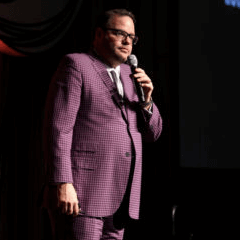The marketing and communication teams of every conference organizer I’ve met with over the past several years all agree that content marketing makes sense as a cornerstone for their marketing strategy. Very few, however, have made significant progress in creating quality, purposeful content.
The main reasons can vary, but often include a lack of time and resources, lack of strategy or leadership support, competing priorities from other departments, a skill gap needed to create quality content, and a lack of emotion in voice.

Jay Baer at PCMA Convening Leaders 2018. Photo Credit Jacob Slaton
For most organizers, the annual conference is their most premium offering for their profession. The content presented and co-created during your conference is the highest form of content marketing. As Convince & Convert President Jay Baer said during his PCMA Convening Leaders 2018 session, “The 365-Day Event: Using Digital Content to Drive Year-Round Engagement,” success is not about making more content, it’s about “atomizing” the content you’re already creating. “Your event,” Baer said, “is the raw material for a year-round content marketing strategy.” Baer provided sound tactical advice for developing a narrative before and after — around the premium content being presented during — your event.
He proposed atomizing conference content using the 1 x 8 rule — for a keynote session, consider developing eight content pieces that make up your narrative. These may include uploads to slideshare, video highlights, live-video interview, a couple of blog posts, best tweets blog post, and quote graphics from Twitter or Instagram.
Understanding your attendee’s journey can provide a helpful framework for creating your conference narrative:
1 Awareness and consideration — about where and when you should be delivering high relevance to your target market. Baer recommended “narrowcasting instead of broadcasting. Get specific. Specificity creates relevancy.” Content should address the profession’s biggest challenges and demonstrate how the conference will address them. Less call to action, more relevancy. Segmentation helps greatly.
2 Optimizing the experience — so your participants get the most out of your conference. Develop content so they can design each day, build anticipation, plan and prioritize, and, most importantly, grow their network.
3 Capture and amplify — FOMO is best achieved during and immediately after your conference. Help conference participants help you by providing shareworthy content, images, and videos.
4 Memory and learning prompts — A high-tech option to help attendees retain content long after the conference ends is to provide digital recordings (Baer’s session is available by subscription at pcma.org/premium-content) or a list of takeaways like the ones in this article. Creating these are the low-hanging fruit for most conference organizers.
Read Content Marketing Institute founder Joe Pulizzi’s “Content Marketing Trends to Watch for 2018” blog post at convn.org/content-marktg.

